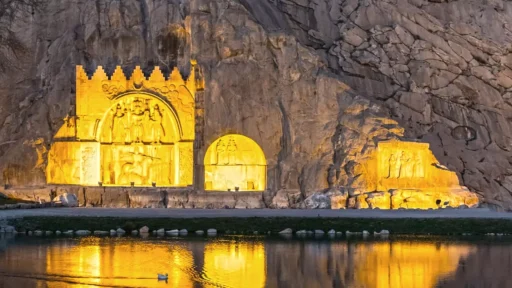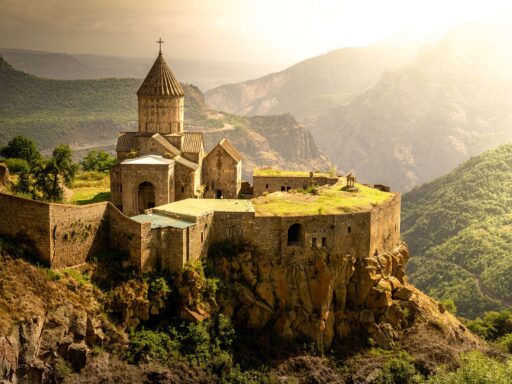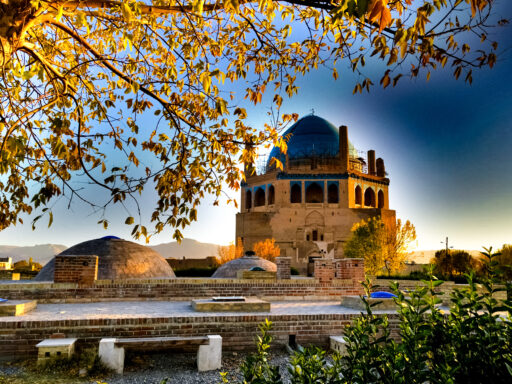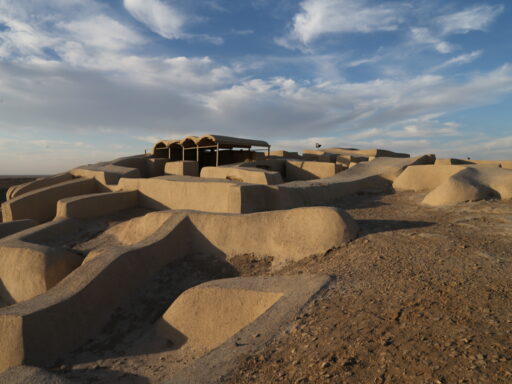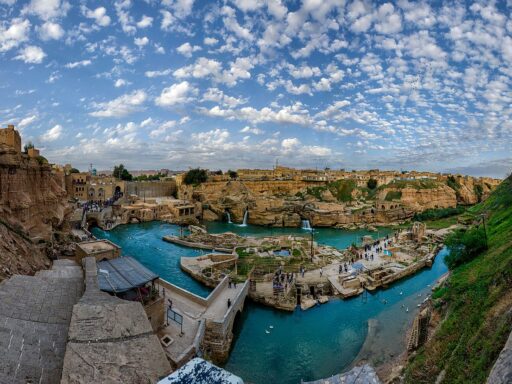Introduction
One of Iran’s most significant archaeological sites is located just outside the city of Kermanshah – the rock reliefs of Taq-e Bostan. This protected area contains a series of carved stone reliefs and monumental statues from the Sassanian era, 224-651 CE. With elaborate hunting scenes, royal investitures, and larger-than-life kings, these ancient carvings provide a window into the art and culture of pre-Islamic Iran. In this article, we’ll explore the history, artwork, and legacy of Taq-e Bostan.
Overview of Taq-e Bostan
Taq-e Bostan, which translates to “Arch of the Garden”, lies about 5 km from Kermanshah city center. The site consists of a rocky cliff housing four grottoes carved out of the stone. Each grotto contains Sassanian era reliefs and sculptures dating from the 3rd to 6th centuries CE. Subjects include royal hunting expeditions, coronation ceremonies, and monumental statues of Sassanian kings.
In addition to the grottoes, there is also an il-Khanid era caravanserai nearby built in the 13th century. This reflects Taq-e Bostan’s position on the ancient Silk Road trading route. The entire site covers about 1 square kilometer, with the rock reliefs centered around the base of a tall cliff.

Historical & Cultural Context
The Sassanian Empire governed Iran and parts of Central Asia from 224-651 CE. They were the archrivals of the Roman-Byzantine Empire. Sassanian art and architecture had deep roots in Persian antiquity but also absorbed influences from Greek, Roman, Central Asian, and Chinese cultures.
Taq-e Bostan served as an outlet for demonstrating imperial Sassanian power and disseminating courtly ideals of kingship and governance. The kings and princes are depicted heroically in acts of hunting and investiture. These would have conveyed ideas about courage, leadership, and divine right to rule.
In terms of artistic style, Taq-e Bostan exemplifies the Sassanian blend of Persian and Hellenistic elements. Figures are conceived naturalistically but display the frontality, symmetry, and hieratic scale of ancient Near Eastern art. Decorative patterns and textiles also integrate Persian and Greco-Roman motifs.
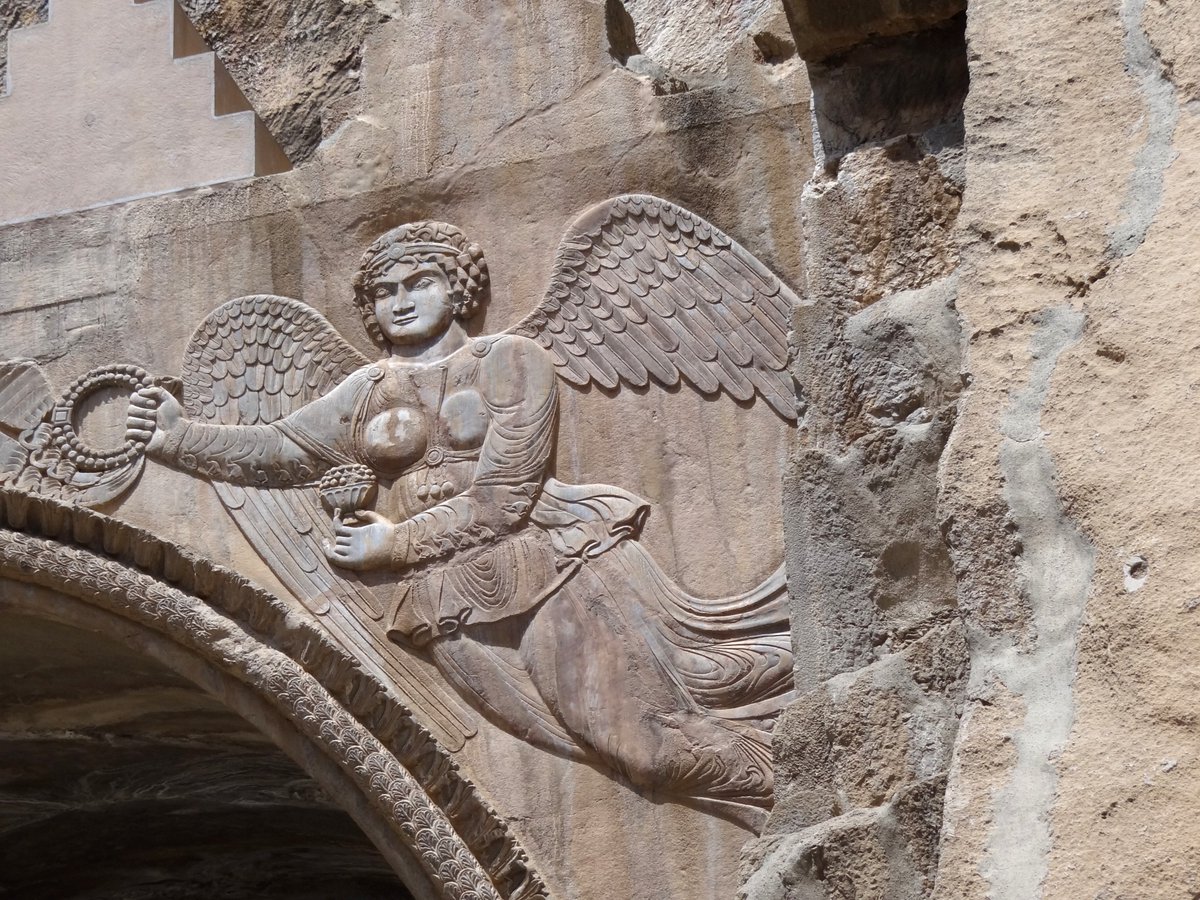
Royal Hunting Scenes
Two of the Taq-e Bostan grottoes depict Sassanian kings participating in royal hunts. These hunt reliefs served as metaphors for the king’s power and valor. In cave I, Bahram II on horseback pursues wild boars while his courtiers attack lions and deer. Cave III has a similar scene showing Bahram pursuing two deer.
The mounted king charges towards the prey with bow drawn and an attendant rushing behind with a spear. Motion is conveyed through swirling capes and the animals’ stride.The king’s large scale asserts his superhuman status. Hunting dogs, dead animals, and nature motifs like trees and flowers create a lively landscape.
These royal hunting scenes displayed the king’s strength, skill, and fitness to rule. By overcoming such powerful beasts, the king proved his courage and mastery over nature.
Coronation & Investiture Reliefs
Grotto IV contains two reliefs depicting different Sassanian kings undergoing royal investiture ceremonies. One relief shows Ardashir I, founder of the Sassanian Empire, receiving the ring of kingship from the Zoroastrian deity Ahura Mazda. The other depicts Khosrow II being crowned by the goddess Anahita.
Both ceremonies involve the king standing on a platform dressed in jewels and regalia while the divinity hands him the sacred symbols of rulership like the diadem and scepter. Attendants bring offerings and play music, emphasizing the ritual’s religious significance. The solemn frontality and hierarchy of scale reflect the gravity of these imperial coronation scenes.
These investiture reliefs affirmed the divine right of Sassanian kings. They were granted power by the Zoroastrian deities through ceremonial rituals, even though they also ruled by military might.
Colossal Statues & Inscriptions
In between Grottoes III and IV stand three towering statues carved directly out of the cliffside. Shapur I, Shapur II, and Khosrow II are depicted frontally in regal attire wearing crowns. The monumental height of 7-11 meters and idealized facial features associate them with divinity and glory.
Inscriptions accompany each statue, giving details about royal lineage and accomplishments. For example, Shapur II’s text describes his victories in the west against the Romans. The language used emphasizes the king’s divine qualities and military supremacy.
These towering statues visually affirmed the semi-divine status of Sassanian kings. Their size and style deliberately invoke awe and subservience to imperial authority.
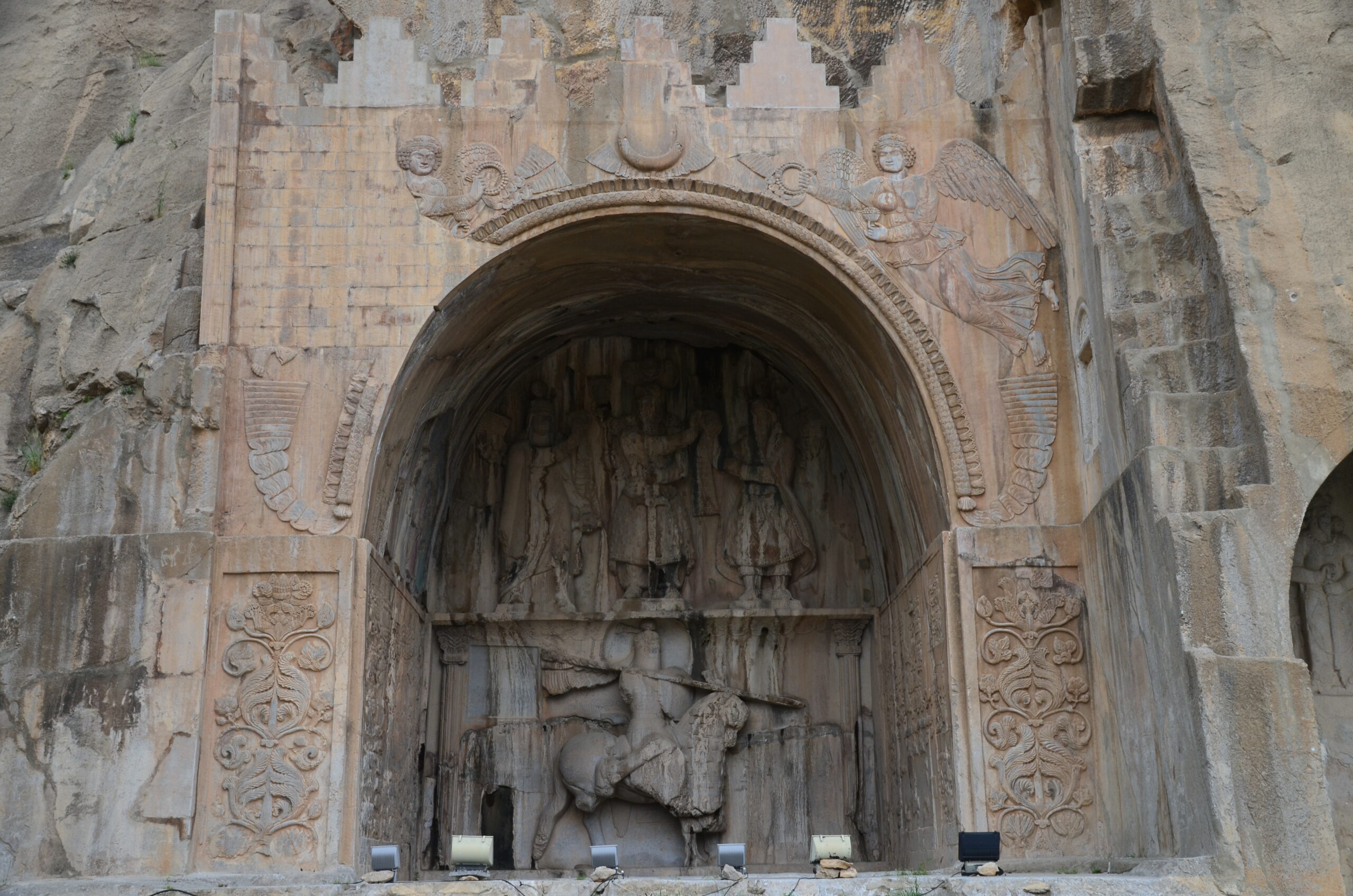
Significance & Legacy
Taq-e Bostan represents one of the grandest displays of Sassanian rock relief art. In terms of artistic significance, it shows:
- Blending of Near Eastern, Persian, and Greco-Roman styles
- Development of visual metaphors asserting imperial power
- Expressive carving conveying movement and naturalism
- Monumental scale elevating kings to superhuman status
Historically, the site gives us invaluable insight into Sassanian court culture, ideology, and worldview. It brings to life the figures who led pre-Islamic Iran and created a rich visual language of kingship.
As a UNESCO World Heritage Site today, Taq-e Bostan draws visitors from around the world to admire these ancient rock reliefs. They remain intact in their original cliffside location, providing an evocative glimpse into Iran’s Sassanian past. Their scale, craftsmanship, and intricate details are even more impressive when seen firsthand. Taq-e Bostan endures as a stunning artistic achievement.
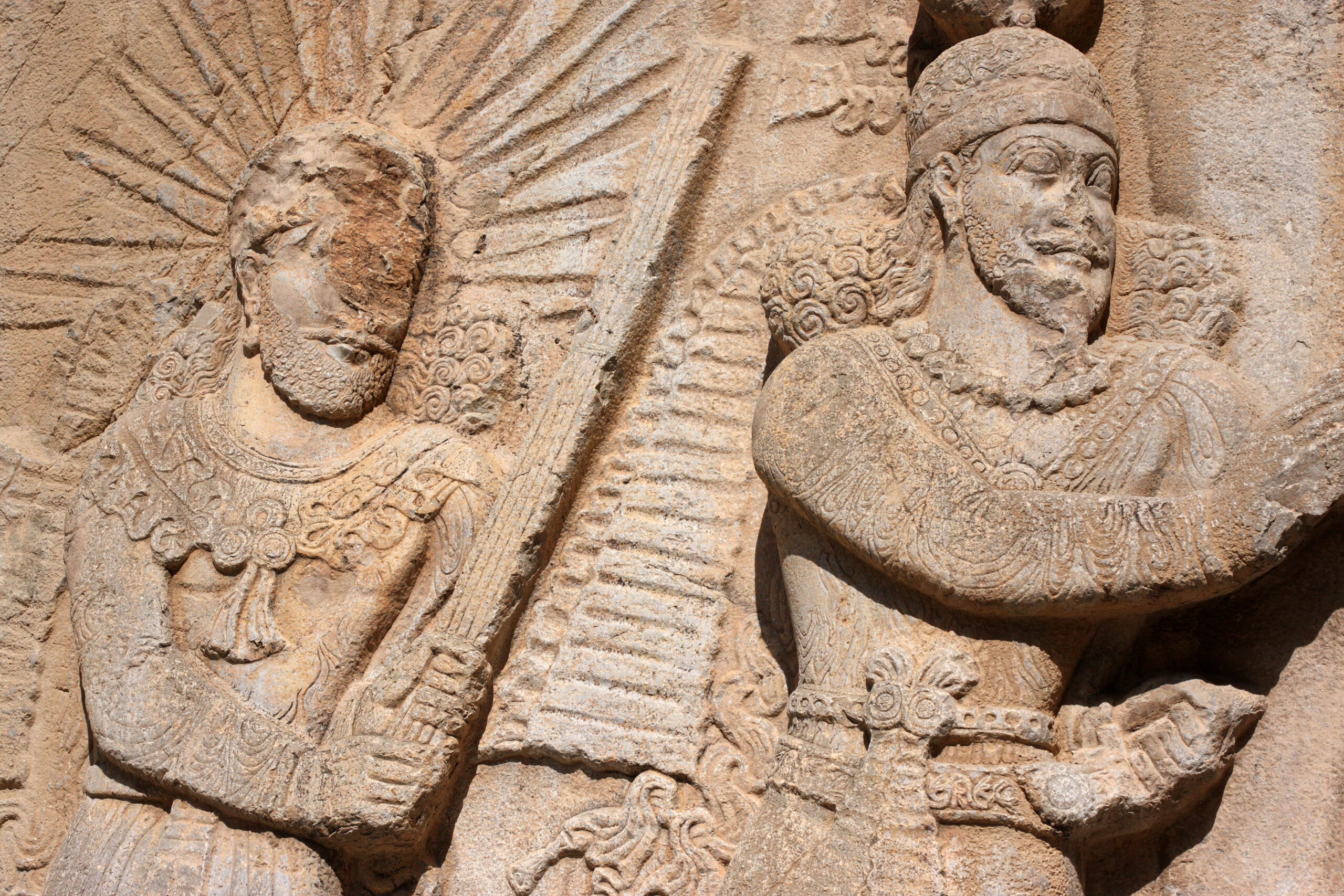
Visiting Taq-e Bostan
Taq-e Bostan is located northeast of Kermanshah, about a 15 minute drive from the city center. It lies close to the modern Sahneh Road.
The site can be visited daily from 8 am to 6 pm. There is an admission fee of 150,000 rials. One to two hours is sufficient to walk around the cliff viewing the grottoes and statues up close.
Early morning or late afternoon is the best time to visit to avoid the harsh midday sun. Winter is also a good time, as there are fewer tourists and the rock reliefs are beautifully illuminated by the low sunlight.
Guides are available on-site for a fee to provide detailed information about each carving. Otherwise, walking around with the help of signs and maps is relatively straightforward. Be sure to wear comfortable shoes and bring water/snacks.
Seeing Taq-e Bostan’s 1500 year old reliefs and sculptures up close is an awe-inspiring experience. Their artistry and scale create a visceral window into ancient Sassanian culture that history lovers and art enthusiasts will appreciate.
Conclusion
The stone carvings of Taq-e Bostan provide an artistic time capsule of the rituals, ideals, and aesthetics of Sassanian Iran. These monumental rock reliefs depict imperial coronations, triumphs, and statuary in compelling detail. Taq-e Bostan gives tangible form to an ancient empire and belief system that was eventually lost. Yet its soaring cliffs and vivid tableaux continue to capture the imagination today. The site is both Iran’s sculptural masterpiece and an enduring symbol of its pre-Islamic glory

